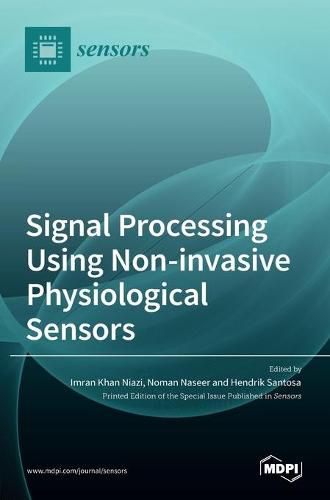Readings Newsletter
Become a Readings Member to make your shopping experience even easier.
Sign in or sign up for free!
You’re not far away from qualifying for FREE standard shipping within Australia
You’ve qualified for FREE standard shipping within Australia
The cart is loading…






This title is printed to order. This book may have been self-published. If so, we cannot guarantee the quality of the content. In the main most books will have gone through the editing process however some may not. We therefore suggest that you be aware of this before ordering this book. If in doubt check either the author or publisher’s details as we are unable to accept any returns unless they are faulty. Please contact us if you have any questions.
Non-invasive biomedical sensors for monitoring physiological parameters from the human body for potential future therapies and healthcare solutions. Today, a critical factor in providing a cost-effective healthcare system is improving patients’ quality of life and mobility, which can be achieved by developing non-invasive sensor systems, which can then be deployed in point of care, used at home or integrated into wearable devices for long-term data collection. Another factor that plays an integral part in a cost-effective healthcare system is the signal processing of the data recorded with non-invasive biomedical sensors. In this book, we aimed to attract researchers who are interested in the application of signal processing methods to different biomedical signals, such as an electroencephalogram (EEG), electromyogram (EMG), functional near-infrared spectroscopy (fNIRS), electrocardiogram (ECG), galvanic skin response, pulse oximetry, photoplethysmogram (PPG), etc. We encouraged new signal processing methods or the use of existing signal processing methods for its novel application in physiological signals to help healthcare providers make better decisions.
$9.00 standard shipping within Australia
FREE standard shipping within Australia for orders over $100.00
Express & International shipping calculated at checkout
This title is printed to order. This book may have been self-published. If so, we cannot guarantee the quality of the content. In the main most books will have gone through the editing process however some may not. We therefore suggest that you be aware of this before ordering this book. If in doubt check either the author or publisher’s details as we are unable to accept any returns unless they are faulty. Please contact us if you have any questions.
Non-invasive biomedical sensors for monitoring physiological parameters from the human body for potential future therapies and healthcare solutions. Today, a critical factor in providing a cost-effective healthcare system is improving patients’ quality of life and mobility, which can be achieved by developing non-invasive sensor systems, which can then be deployed in point of care, used at home or integrated into wearable devices for long-term data collection. Another factor that plays an integral part in a cost-effective healthcare system is the signal processing of the data recorded with non-invasive biomedical sensors. In this book, we aimed to attract researchers who are interested in the application of signal processing methods to different biomedical signals, such as an electroencephalogram (EEG), electromyogram (EMG), functional near-infrared spectroscopy (fNIRS), electrocardiogram (ECG), galvanic skin response, pulse oximetry, photoplethysmogram (PPG), etc. We encouraged new signal processing methods or the use of existing signal processing methods for its novel application in physiological signals to help healthcare providers make better decisions.